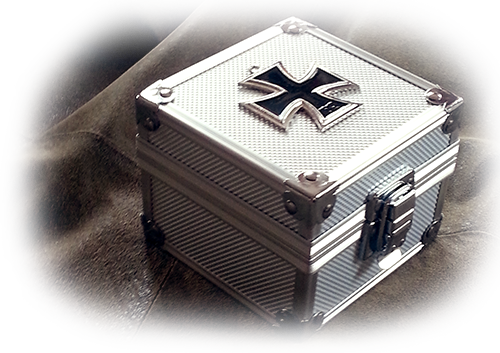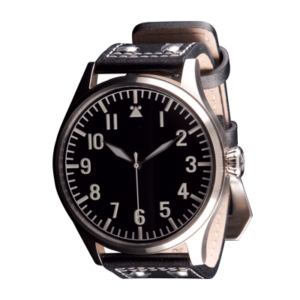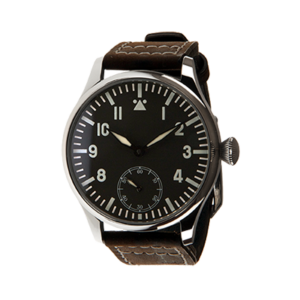B-UHR JU 87
285,00 €
model watch, stainless steel, brand new in box + warranty card!
Description
CASE: a stainless steel polished case, 42 mm
MOVEMENT: 17 jewels manual wind
CROWN: stainless steel oversized crown
DIAL: Black matte dial
HANDS: Hour hand Superluminova C3, minute hand Superluminova C3, second hand white with Superluminova C3
CASEBACK: glass
GLASS: antireflective
BAND: extra thick heavy duty stitched leather band
BUCKLE: polished stainless steel buckle

The Junkers Ju 87
Introduction: 1936
Retired: 1945 (Luftwaffe)
Primary users: Luftwaffe, Regia Aeronautica,
Royal Romanian Air Force, Bulgarian Air Force
Number built: Estimated 6,500
The Junkers Ju 87 or Stuka (from Sturzkampfflugzeug, “dive bomber”) was a two-man (pilot and rear gunner) German dive bomber and ground-attack aircraft. Designed by Hermann Pohlmann, the Stuka first flew in 1935 and made its combat debut in 1936 as part of the Luftwaffe’s Condor Legion during the Spanish Civil War.
The aircraft was easily recognisable by its inverted gull wings and fixed spatted undercarriage, upon the leading edges of its faired maingear legs were mounted the Jericho-Trompete (“Jericho Trumpet”) wailing sirens, becoming the propaganda symbol of German air power and the blitzkrieg victories of 1939–1942. The Stuka’s design included several innovative features, including automatic pull-up dive brakes under both wings to ensure that the aircraft recovered from its attack dive even if the pilot blacked out from the high acceleration.
Although sturdy, accurate, and very effective against ground targets, the Ju 87, like many other dive bombers of the war, was vulnerable to modern fighter aircraft. Its flaws became apparent during the Battle of Britain; poor manoeuvrability and a lack of both speed and defensive armament meant that the Stuka required heavy fighter escort to operate effectively.
The Stuka operated with further success after the Battle of Britain, and its potency as a precision ground-attack aircraft became valuable to German forces in the Balkans Campaign, the African and Mediterranean theaters and the early stages of the Eastern Front campaigns where Soviet fighter resistance was disorganised and in short supply.
Once the Luftwaffe lost air superiority on all fronts, the Ju 87 once again became an easy target for enemy fighter aircraft. In spite of this, because there was no better replacement, the type continued to be produced until 1944. By the end of the conflict, the Stuka had been largely replaced by ground-attack versions of the Focke-Wulf Fw 190, but was still in use until the last days of the war. An estimated 6,500 Ju 87s of all versions were built between 1936 and August 1944.
Some notable airmen flew the Ju 87. Oberst Hans-Ulrich Rudel was the most successful Stuka ace and the most highly decorated German serviceman of the Second World War. The vast majority of German ground attack aces flew this aircraft at some point in their careers.







